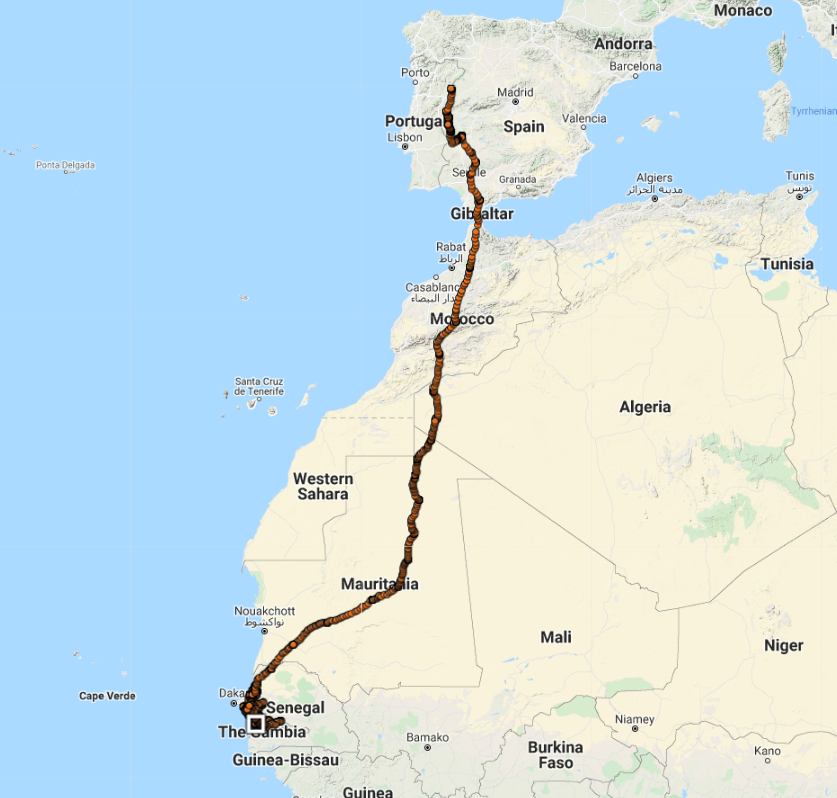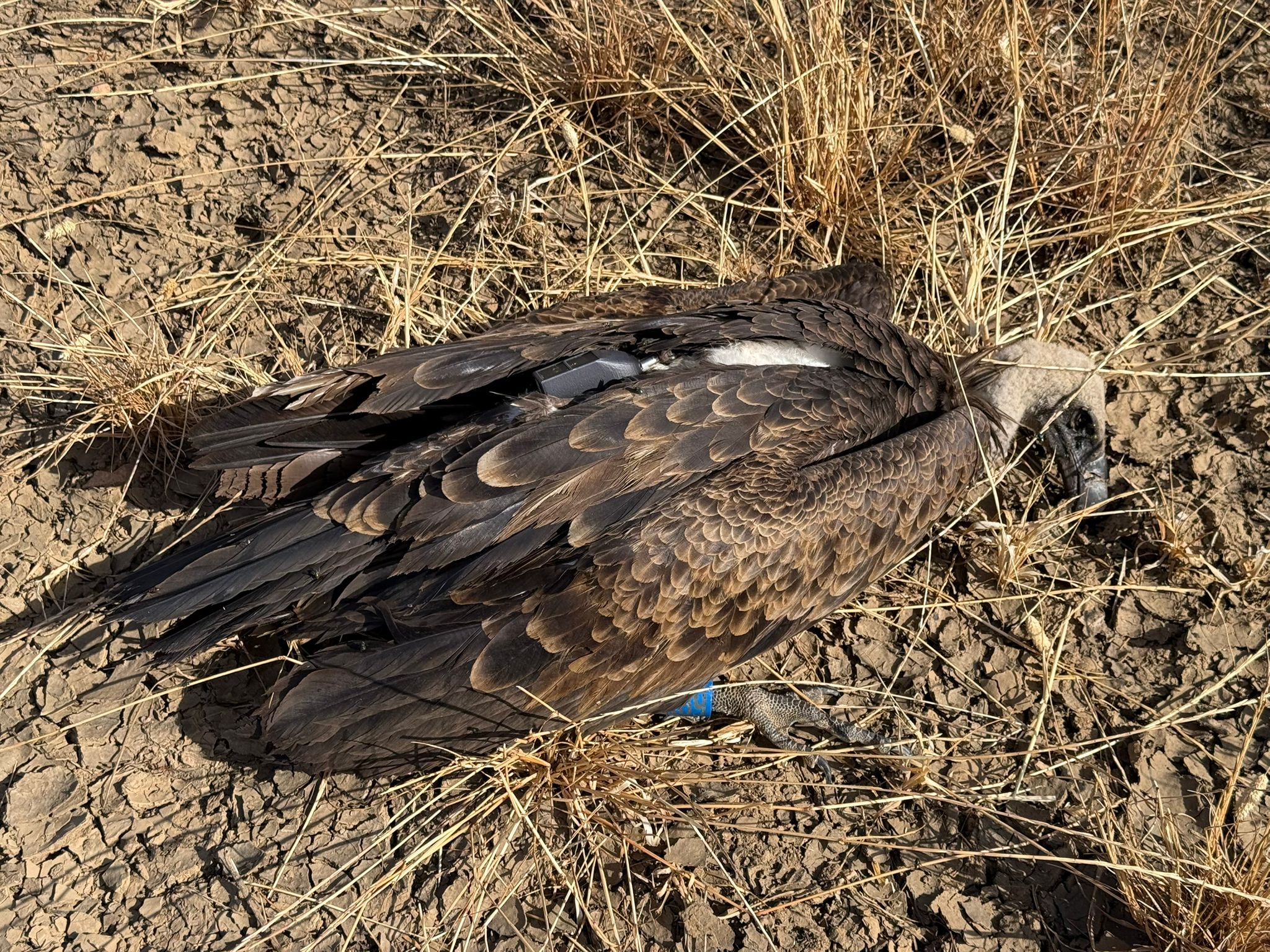We last shared an update on the Rüppell’s Vulture named Vouzela that travelled from Europe to Africa back in November. After the young vulture was rescued and released back into the wild in Portugal, the vulture quickly headed to Africa, making good progress south. Based on the GPS data, it seems Vouzela is doing well.
Monitoring the first Rüppell’s Vulture we equipped with a GPS transmitter

As the sightings of the African Rüppell’s Vulture continue to grow in Europe, especially in Iberia, we at the Vulture Conservation Foundation (VCF) intend to monitor the situation by equipping individuals with GPS transmitters to help determine how long they stay in Europe and where they come from. The origin of Vouzela still remains a mystery, but GPS tracking data can help us figure it out.
Back in early September, a weak Rüppell’s Vulture that was only a few months old was rescued and successfully rehabilitated thanks to CERVAS, CRAS UTAD, ICNF. Ahead of the release back to the wild, the vulture was equipped with a GPS transmitter provided by us with the funding of the MAVA Foundation – the first time for the species in Portugal and to our knowledge only the third in Europe. We also collected samples for genetic analysis to reveal the sex of the bird. We now know that Vouzela is male.
The Rüppell’s Vulture Vouzela seems to be doing well in Africa

The Rüppell’s Vulture Vouzela full range movements since his release in Portugal and travels to Africa (September to December 2021) 
The Rüppell’s Vulture Vouzela movements in Senegal and visit in Gambia
We last reported that Vouzela travelled more than 4000 km to Senegal. After his migration ended on 22 November 2021, he seemed to settle in the area but is still moving around. He was flying around 3500 km in 30 days since arriving. He mainly stayed in Senegal, with some time spent also in The Gambia. Maybe that is where he is from? As the exact origin is still unknown, we can only guess this so far.
Africa’s Rüppell’s Vulture becoming a common sight in Europe
The Rüppell’s Vulture (Gyps rueppelli) is an African species whose distribution range is located in the equatorial and eastern areas of the continent. It resembles our Griffon Vulture (Gyps fulvus), especially the juvenile and immature birds, being slightly smaller in size. The IUCN’s Red List of Threatened Species considers the Rüppell’s Vulture Critically Endangered, which is the last category before global extinction. Its declining state is mostly due to the successive and frequent mass poisonings in Africa, which are driving several species of African vultures to extinction.
Even though Rüppell’s Vultures are becoming alarmingly scarce in Africa, surprisingly, they are increasingly seen in Europe. This is probably due to increased mixings of individuals of this species with wintering juvenile Griffon Vultures in West Africa. A percentage of Europe’s growing population of Griffon Vultures winters in the Sahel zone of West Africa, where birds encounter some Rüppell’s Vultures. When European Griffons start their migration north, they probably drag some African vultures with them, and with plenty of food in Europe, they are beginning to call our continent home. The species was also added to Andalucía’s list of vultures, making it Europe’s 5th vulture species and one of the most threatened bird species in Spain. Furthermore, in 2020, it was confirmed for the first time that two different adult Rüppell’s Vultures have been regarded as showing breeding behaviour in Griffon Vulture colonies in Cádiz and Málaga respectively.





